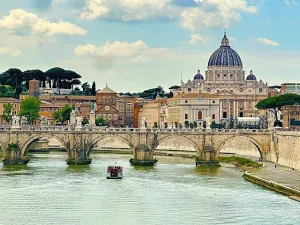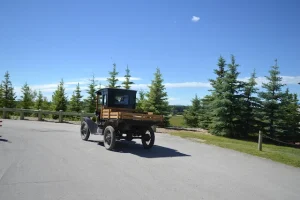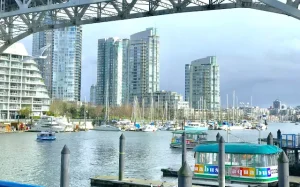Must See UNESCO World Heritage Sites in the Center of Portugal
HISTORY OF PORTUGAL MONASTARIES
In ancient times, Portugal used to be a haven for Roman Catholic Monesteries. In the 1800’s the country experienced a very brutal civil war. At the end of the war, Portugal terminated the state sanction for its monasteries. This caused the lands and possessions of these properties to be nationalized.
Thus the reason why there are many abandoned monasteries in Portugal. However, most of them are well preserved as museums and tourist destinations. In addition, several have been remodeled as incredble hotels! We had the unique experience of staying at a Monastery Hotel . We ‘ll share where you can experience this too, in an upcoming article.
The 3 monasteries we visted are UNESCO WORLD HERITAGE SITES and are called the Unesco Triangle. If you love monasteries put the monesteris in Portugal at the top of your “must-see” list!
HOW TO GET TO UNESCO TRIANGLE MONASTERIES
The three monasteries of the Unesco Triange are centrally located in Portugal. You can easily drive to each one. It’s best to rent a car at the Lisbon airport. The drive is 122 km; and will take 1 hour and 3o min on highway A8.
Driving in Portugal is very easy and there isn’t much traffic in the central region. All 3 of the monasteries are a short distance from each other.
ENTRANCE TICKETS TO PORTUGAL MONASTERIES
Unesco World Heritage Monasteries of the Center of Porgual cost 6 euro each to visit. However, the churches are free. You can buy a passport for all 3 monasteries that costs 15 euro. If you buy the passport it’s fun to collect the stamp from each one as you enter!
Currently you can only purchase tickets onsite at the monasteries. Online sales for the tickets are currently unavailable. If your travel to Portugal isn’t imminent; I suggest checking the website before you leave.
ALCOBACA MONSTERY
Alcobaca is famous for the largest monastery in Portugal. It’s a beautiful town and village, at the instersection of the Alcoa and Baca rivers. The river is gorgeous and you will feel a peaceful vibe upon arrival. At the back of the monastery, a historic hotel was added a year ago.
The new Montebelo Mosteiro de Alcobaca hotel, retains much of the original design detail and architecture . It was an AMAZING EXPERIENCE to stay here. I highly recommend it!
The magnificent monastery is one of the most impressive examples of Cistercian architecture in Europe. Even though Alcobaca Monastery is 900 years old, it has preserved its set of medieval buildings. The church is the largest Gothic church built in the middle ages in Portugal.
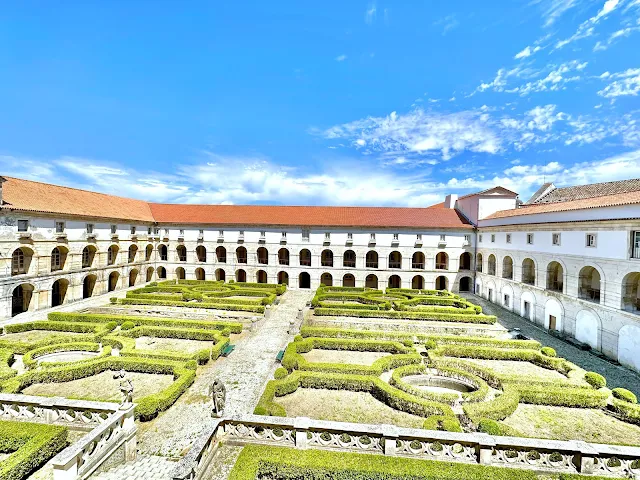
It was a bucket list experience to enter this magnificent structure! The facade has designs that look like icing on a cake. It was impressive how many rooms, hallways and arches are in the monastery. The kitchen was my favorite part of the tour. Learning about how the food was served, stored and preserved was very interesting. The courtyard was a stunning sight to see as well!
The story of Pedro and Ines, the most tragic love story in Portugal still inspires visits to the Monastery of Alcobaca. This story is the Porguese equivalent of ” Romeo and Juliette.” Ines was a Spanish born girl, who fell in love with the heir to the throne. The pair married in secret, but fearing her Spanish influence the king had her murdered. We saw their ornate tombs at the monastery.
Monastery of Santa Maria da Vitoria
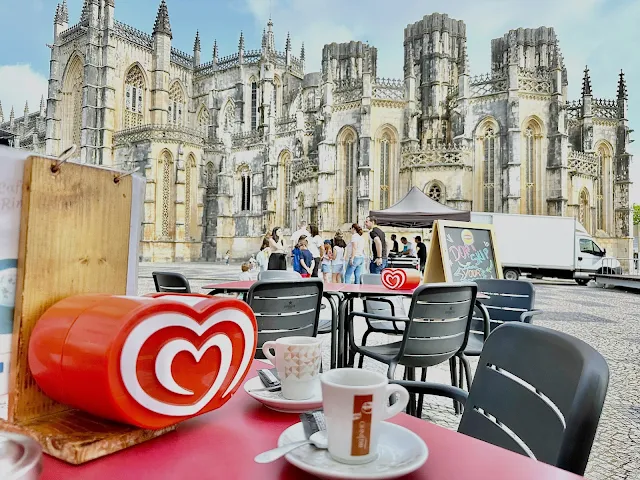
Next we drove 14 miles to Batalha Monastery (Monastery of Santa Maria Da Vitoria). The views from the street are just breathtaking! Across the from the monastery is a coffee shop. What a SPECTACULAR view for our morning brew. We were in awe of the grand structure in front of us!
This monastery’s great architectural value and historical signifance led to the building being classified as a World Heritage Site in 1983. The project for construction lasted almost two centuries. The Monastery of Batalha was built roughly from 1388 onwards and the last work was completed in 1566.
Interesting fact: several prominent figures from Portuguese history are buried at the monsastery. Icluded are King Joao and his wife Phillipa, along with their famous son Henry the Navigator.
This Batalha Monastery is one of the most fascinateing Gothic monuments in the Iberian Peninsula. In August of 1385 the Battle of Aljubarrota took place, that would help prove decisive for the consolodation of the Portuguese nation.
In Portugal is a tradition of honoring many unknown soldiers; this has been in place since April 10, 1921. We had the honor of seeing the soldiers standing guard in silence in one of the monastery rooms. It was a very moving experience to see this!
Convent of Christ
The Convent of Christ ( Convento de Cristo) was my favorite of the 3 World Heritage Sites. The site is located in Tomar and is one of the most extraordinary monuments in Portugal. This church and castle is one of the most popular destinations in the Center of Portugal.
The city is dominated by the vast complex of Convent of Christ, standing at the top of the hill. It’s a spectacular view to witness from afar! The convent is surrounded by the walls of the Castle of Tomar. The church and castle were built over a span of 5 centuries.
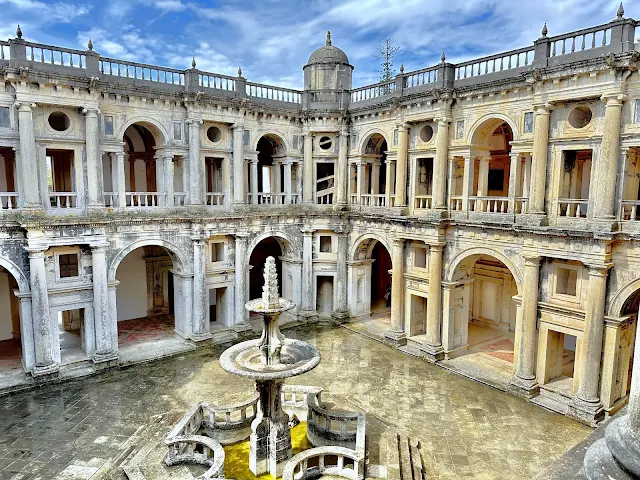
Inside you will find one of the most brilliant examples of a church with a centralized plan built by the temple. It was later decorated with sculptures and paintings.
The convent’s 12th century Charola is so breathtaking! . The paintings are so intricate and detailed. We were in awe of the beautiful artwork.
The Manueline Window is magnificent and is considered one of the most complex windows in the world. This window is hailed as a masterpiece of late Gothic Manueline architecture. It displays various motifs of scripture and references relating to Portugal’s overseas expansion at the time: twisting ropes, knots, globes and crosses. Our tour guide told us the window has been under renovation for the past year.
I hope you enjoyed the tour of the UNESCO triangle of Monasteries in Portugal. These 3 are the most popular with tourists. There are lots more churches and monasteries to explore!


